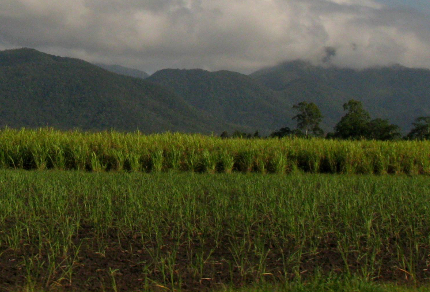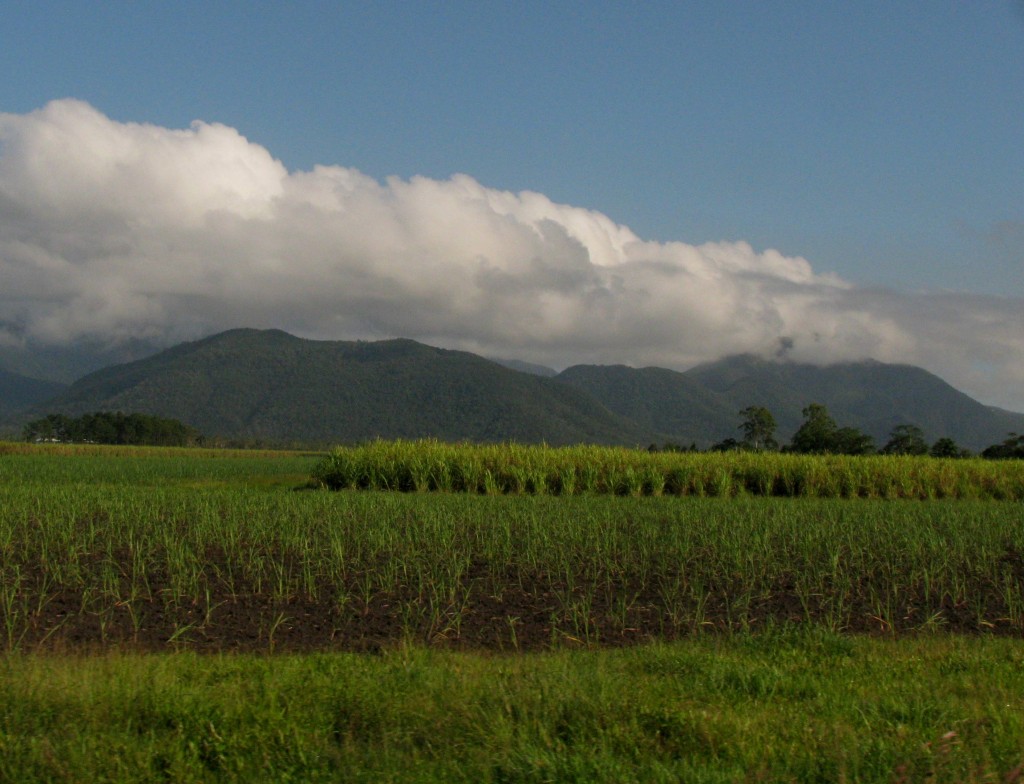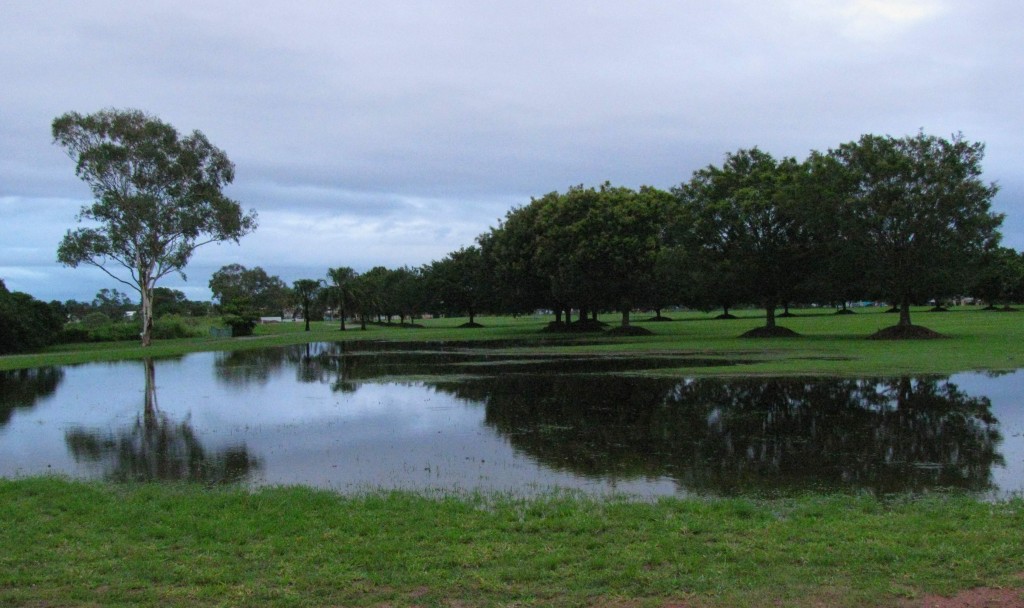
Sodden Bicentennial Park, in Townsville’s Ross River Parkway (© Magi Nams)
In the day’s first light, frog songs rolled into the new week in a tide of deep, rubber-band twangs, rough buzzes, and high, rolling trills. The past weekend in Townsville was balmy rather than scorching, but with humidity so high it wrapped itself around Vilis and me and sucked at our energy. On this peaceful morning, though, the air felt fresh, as though last night’s downpour knocked the water vapour out of the air and pounded it over the ground surface instead. Lawns lay sodden, with any depressions now appearing as pools from which vociferous frogs belted out their come-hither courtship calls. Poinciana flowers thrown onto pavement by the rain had been trampled into red smears. Gravity-seeking rainwater rushed into storm drains and poured over a bitumen-reinforced section of bank into the river.
For an hour, I walked and birded in the Ross River Parkway, jotting down sightings of a channel-billed cuckoo in flight, of a pair of Australian ravens preening in a eucalypt, of two whimbrels standing camouflaged on a sandbar, and of a Caspian tern patrolling the river. The deep, reverberating call of a pheasant coucal seemed almost to echo in the morning air.
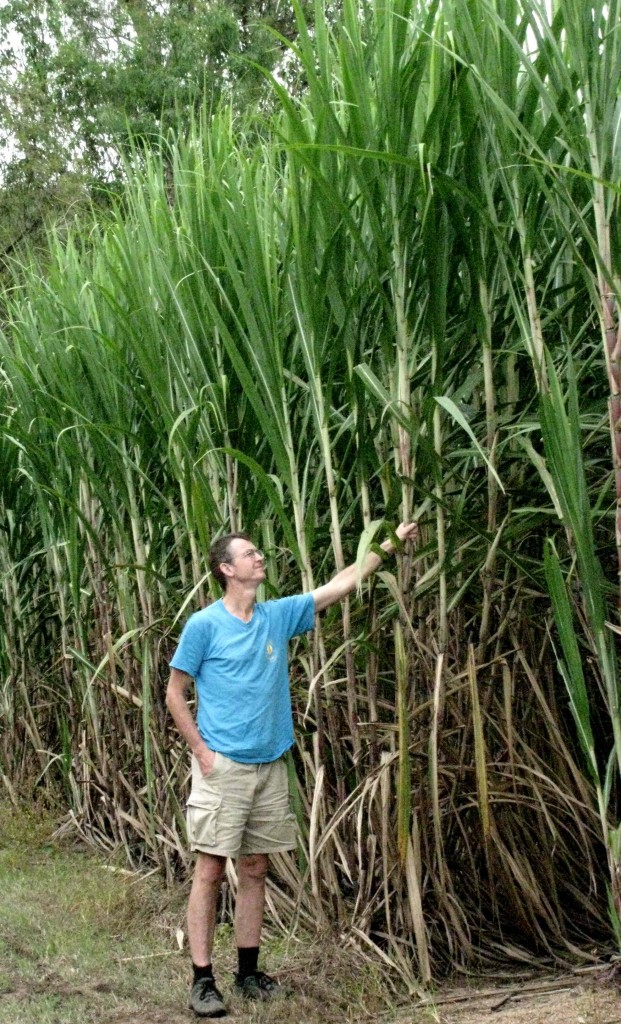
Vilis and Sugarcane near Crystal Creek, Queensland, in late April (© Magi Nams)
While walking, I thought of Saturday’s issue of the Townsville Bulletin, which had devoted a two-page spread to the plight of North Queensland sugarcane farmers stalled in their cane harvest because of the early Wet.1 Sugarcane is big business in Burdekin Shire to the south of Townsville, and in Hinchinbrook and Cassowary Coast Shires north of Townsville, as well as in other Queensland regions, notably the Bundaberg area in the southeast.
When Vilis, Janis, and I drove to Bundaberg in early July, the coastal Bruce Highway led us through more sugarcane plantations than I had imagined existed in Australia, and when Vilis and I drove north to the Daintree in late October, the coastal plain cane plantations stretched from near Crystal Creek to beyond Port Douglas, a distance of around 400 kilometres (with the odd hiccup of unsuitable terrain here and there). During that northward drive, we saw cane harvesters hard at work, able to access paddocks that had, after storms, dried in the same sunshine we employed to visit the Daintree and Great Barrier Reef.
That was before the rains really hit hard. Throughout November, precipitation has arrived in frequent and sometimes earth-drenching doses in the Townsville area. A photograph in the Bulletin showed Burdekin cane in standing water.1 Within Burdekin Shire, $150 million worth of cane is still in the paddocks, awaiting harvest.1 If cane farmers can’t get it out, the cane will have to stand until next year’s harvest, leaving it vulnerable to violent storms such as tropical cyclones.1 Meanwhile, farmers are hurting for money, cane crews are moving out, and Burdekin businesses are already feeling the crunch, with that expected to squeeze Townsville as well.1 I grew up on a mixed farm in the Canadian Prairies and saw, one summer evening, my family’s entire grain harvest hailed out in a massive thunderstorm that tore roofs off buildings in my home town of Viking, Alberta. So, the plight of Queensland’s cane farmers is one to which I can relate.
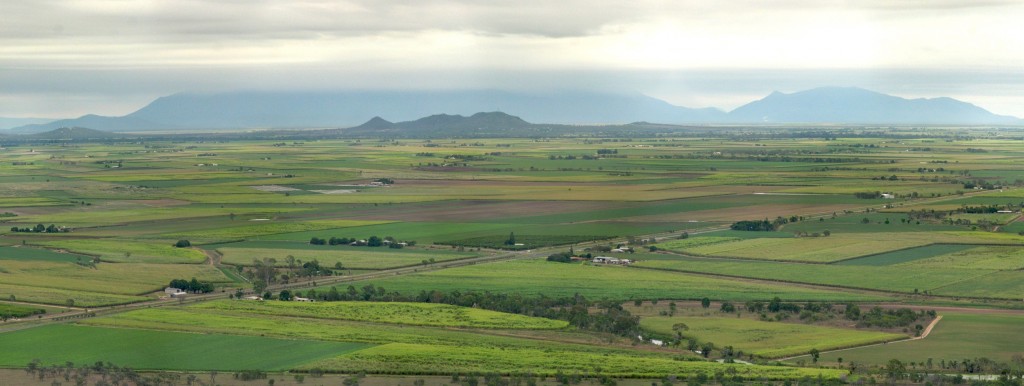
Burdekin Sugarcane Country viewed from Mount Inkerman, Queensland, in late August (© Vilis Nams)
Today’s birds: olive-backed oriole, white-throated honeyeater, figbirds, mynas, rainbow lorikeets, bush stone-curlews, magpie-larks, rock doves, scaly-breasted lorikeets, house sparrows, peaceful doves, eastern koel, brown honeyeaters, pheasant coucals, golden-headed cisticolas, Australian magpies, channel-billed cuckoo, Caspian tern, masked lapwings, Australian white ibises, Australian ravens, black kite, welcome swallows, plumed whistling ducks, blue-faced honeyeaters, whimbrels, helmeted friarbird, Australian pipit, whistling kite, white-gaped honeyeaters, rainbow bee-eaters, yellow honeyeaters, pied imperial-pigeon, little corella, brush cuckoo.
Reference:
1. John Andersen. Cane disaster to have big ripple effect. Townsville Bulletin, Saturday, November 20, 2010, pp. 34-35.

